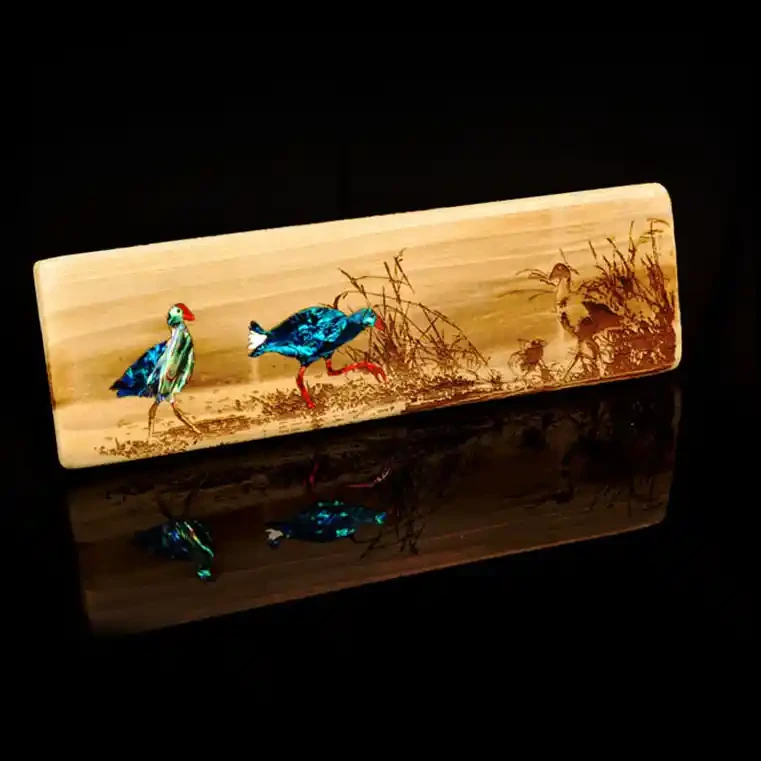Description:
Recycled wood with pūkeko
Lovely rustic artwork with our native pūkeko.Recycled wood with paua pūkeko. Ready to hang (saw tooth hanger at the back). The timber has been treated and processed into a finished product and is suitable for export.
- approx. size: 300mmx90mm (11.81"x3.54")
Pūkeko info
The pūkeko is probably one of the most recognised native birds in New Zealand with its distinctive colourings and habit of feeding on the ground. Pūkeko is the New Zealand name for the purple swamphen (Porphyrio porphyrio). There are many subspecies of purple swamphen.
Pūkeko facts
Pūkeko are a member of the rail family of birds. They look very similar to takahē, although takahē are much heavier. Pūkeko are about 51 centimetres long with distinctive colourings; a deep blue colour, with a black head and upperparts, white feathers under their tail, and a red bill and legs.Pūkeko are widespread and are as at home in pasture and farmland as they are in wetlands. They are commonly seen along marshy roadsides and low-lying open country.
Unlike many other native birds, the pūkeko has adapted well to new habitats, such as grassed paddocks, croplands and even city parks, a necessity brought about by disappearing wetlands. However, the pūkeko is essentially a bird of swampy ground, lagoons, reeds, rushes and swamps.
Although they're not great flyers, they are good waders, swimmers and runners.
They're mostly vegetarian, but also eat invertebrates, eggs, frogs, small fish, chicks and mammals, especially in breeding season where chicks are fed protein-rich animals.
Pūkeko are cooperative breeders, with multiple male and female birds often sharing a nest and responsibility for incubating eggs and rasing chicks. Pūkeko can be aggressive and territorial.
Source: Department of Conservation >>

